CHICAGO — Sweetener use is a sensitive topic for dairy foods formulators. Consumers expect products such as flavored milk, ice cream and yogurt to taste sweet. At the same time, they frequently hear that too much sugar may be detrimental to their health. As a result, product developers are striving to achieve a balance between meeting consumer expectations for taste and health.
“With the new Nutrition Facts flagging added sugars, food manufacturers are finding they need to justify the use of sweeteners,” said Brooke Bright, senior data strategy manager, Label Insight, Chicago.
Dairy processors are finding that a back-to-basics approach of sweetening simply with sugar — just not too much — appeals to today’s shoppers. They see the word sugar on the ingredient statement and it resonates.
This preference is beneficial to processors, as sugar’s sweetening properties are unmatched by any other ingredient. With sugar, chemically known as sucrose, the basic taste of sweet comes on slowly. It builds roundness and then slowly abates. Sugar also provides a number of functional properties. For example, it binds moisture in ice cream, which assists with freeze-thaw stability. Sugar also contributes solids, which impacts the mouthfeel and viscosity of many dairy products. No other single ingredient both sweetens and functions like sucrose.
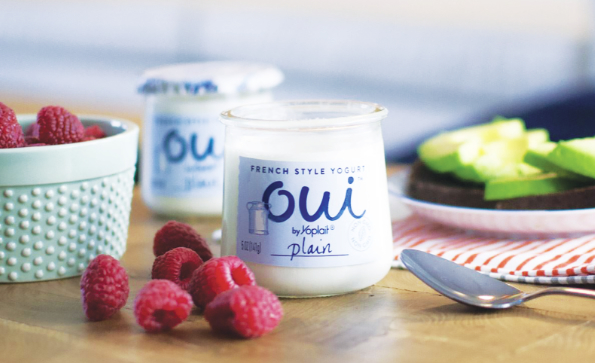 Most commercial sucrose comes from either sugarcane or sugar beets. The former is gaining traction in the organic and natural sectors.
Most commercial sucrose comes from either sugarcane or sugar beets. The former is gaining traction in the organic and natural sectors.
“Cane sugar as an ingredient in manufactured food feels more authentic and trustworthy to today’s consumer,” said Melissa Muldowney, strategic marketing director — food, Kerry, Beloit, Wis. “The name — cane sugar — inherently implies where the sugar is coming from. Using cane sugar in formulations aligns with the consumer’s pursuit of trust through transparency.”
Jeff Casper, director of research and innovation, Malt Products Corp., Saddle Brook, N.J., said, “Consumers seeking organic and non-G.M.O. options are recognizing cane sugar as coming from a non-G.M.O. source. Approximately 95% of sugar beets harvested today are G.M.O.”
Despite the fact that both cane and beet sugar is 99.95% sucrose, there are some who believe cane sugar tastes different and performs differently than beet sugar in certain applications.
Boasting a non-G.M.O. label, Oui by Yoplait from General Mills, Minneapolis, is whole milk yogurt featuring a simple recipe that is slightly sweetened with cane sugar. It is the only added sweetener.
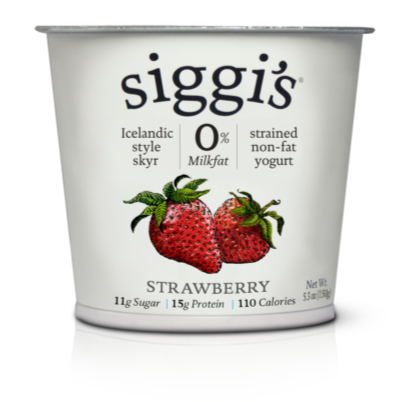 The same is true for siggi’s cultured products from The Icelandic Milk & Skyr Corp., New York. All siggi’s products are lightly sweetened with organic agave nectar or cane sugar. There is also a bit of sugar that naturally comes from the added fruit.
The same is true for siggi’s cultured products from The Icelandic Milk & Skyr Corp., New York. All siggi’s products are lightly sweetened with organic agave nectar or cane sugar. There is also a bit of sugar that naturally comes from the added fruit.
“We have always been at the forefront of reducing sugar in yogurt, and we are constantly pushing ourselves to use even less sugar while still making delicious yogurt with no strange additives,” said Siggi Hilmarsson, founder. “We want to keep any sugar in our products, even if natural, to a minimum. We do not use any artificial sweeteners or high-fructose corn syrup.”
The perception of natural
Sweeteners direct from Mother Nature, in general, appeal to consumers. These include honey, plant syrups and fruit purees.
“The truly natural sources of these products — trees, hives, coconut palm plants, etc. — appeal to shoppers who are learning that stevia is now more manufactured than grown as a plant,” said Kara Nielsen, vice-president of trends and marketing, CCD Innovation, San Francisco.
A bonus with many sweeteners perceived as natural is they may bring color, flavor, nutrition and functional benefits to the product. Honey is a great example, as there are more than 3,000 varietals of honey worldwide, each with a unique flavor and color. This variety provides processors the ability to create multiple sensory experiences by varying just one ingredient.
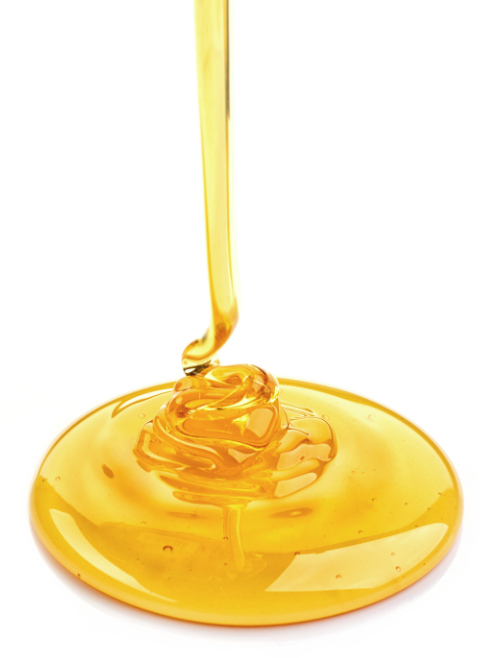 “This all-natural sweetener comes straight from nature,” said Catherine Barry, director of marketing, National Honey Board, Firestone, Colo. “Compared to sucrose, honey is slightly sweeter, allowing processors to achieve a targeted sweetness with less volume.
“This all-natural sweetener comes straight from nature,” said Catherine Barry, director of marketing, National Honey Board, Firestone, Colo. “Compared to sucrose, honey is slightly sweeter, allowing processors to achieve a targeted sweetness with less volume.
“But honey offers more than sweetness. The ingredient has the ability to smooth or mask the flavor profile of functional ingredients that carry off flavors.”
Agave nectar is another natural viscous sweetener gaining traction among dairy processors. It is made from the agave plant and is about 1.5 times as sweet as sucrose. Available in a range of colors, it tends to be thinner than honey but thicker than simple syrup.
“Food technologists are actively seeking to replace refined sweeteners that have an image of being empty calories,” Mr. Casper said. “Both high-fructose corn syrup and standard corn syrups are the primary targets for replacement.”
Some are looking at the use of invert sugar, a liquid sweetener made from sucrose and also found in maple syrup and honey. The process involves hydrolyzing the disaccharide into its monosaccharide units, rendering the resulting ingredient sweeter than sucrose, as fructose has almost double the sweet intensity of sucrose. In past years, invert sugar was replaced by the more economical high-fructose corn syrup. However, consumer sentiment toward HFCS has many processors revisiting invert sugar for its functionality and clean label appeal.
Opening the toolbox
A formulators’ toolbox of sweeteners is quite extensive. When short and simple ingredient statements are not a priority, many find success with sweetener blends that work synergistically with other ingredients in the system. If a no-added-sugar claim is not required, sugar is usually part of the system.
Stevia increasingly is being used with cane sugar. This combination helps deliver well-rounded sweetness while keeping added sugars and calories on the lower side.
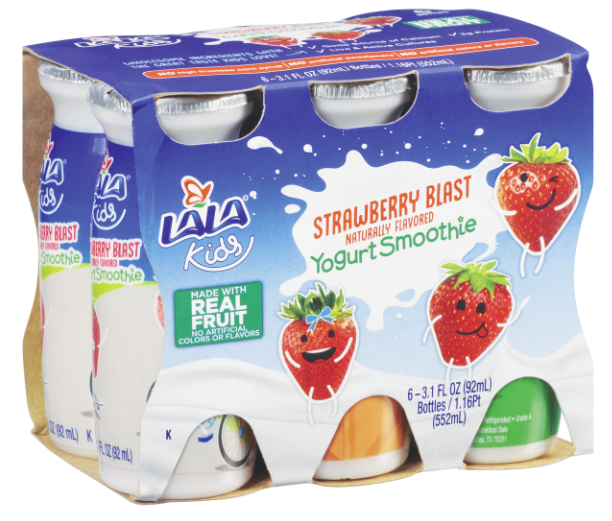 LaLa U.S., Dallas, now offers LaLa Kids drinkable yogurt smoothies. The product’s label promotes that the drinks are made with fruit and contain no HFCS, nor any artificial colors, flavors or sweeteners. The product is sweetened with sugar and stevia leaf extract.
LaLa U.S., Dallas, now offers LaLa Kids drinkable yogurt smoothies. The product’s label promotes that the drinks are made with fruit and contain no HFCS, nor any artificial colors, flavors or sweeteners. The product is sweetened with sugar and stevia leaf extract.
The sweetener market features several stevia suppliers, with many offering specialty ingredients with unique sweetening properties. PureCircle, Oak Brook, Ill., for example, touts its proprietary stevia plants.
“The sweeteners from our plants offer improved mouthfeel and a better upfront, rounded sweetness profile,” said Carolyn Clark, director of global marketing.
Cargill, Minneapolis, has started producing what it describes as a next-generation sweetener made with two of the best-tasting sweet compounds found in the stevia leaf: Reb M and Reb D.
“Since the stevia plant produces only trace amounts of Reb M and Reb D, Cargill turned to fermentation to produce this ingredient,” said Andy Ohmes, global director of high intensity sweeteners. “This process allows for large quantities of these most sought-after sweet compounds to be commercially produced in a more sustainable way.”
Ingredion Inc., Westchester, Ill., now offers a 95% pure Reb M sweetener derived from the stevia leaf. It enables the reduction of even more sugar without compromising on the sweetness profile of dairy products, said Ivan Gonzales, marketing director — dairy.
“Ingredion also recently launched low-sugar glucose syrups, thereby contributing less to ‘added sugars’ on the nutritional label,” he said. “Non-G.M.O. corn, tapioca and low-viscosity options are available.”
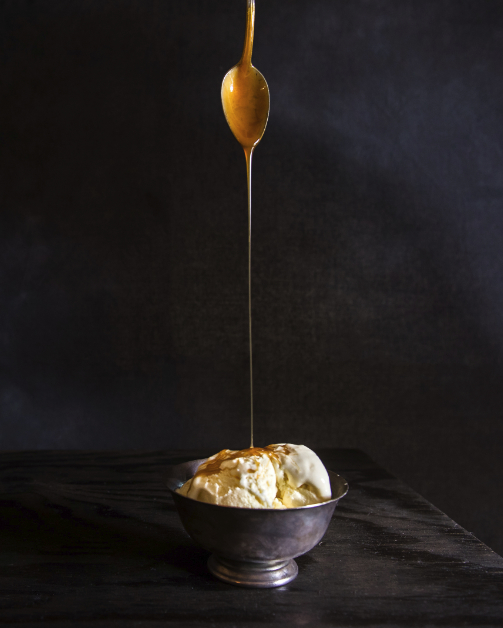 These low-sugar glucose syrups work in conjunction with flavorful syrups such as agave and honey in dairy applications.
These low-sugar glucose syrups work in conjunction with flavorful syrups such as agave and honey in dairy applications.
“They provide additional viscosity in yogurt fruit preps,” said Andrea Belford, senior business scientist at Ingredion. “In ice cream, they provide needed body and ice crystal control, while contributing less added sugar to the formulation.”
For ice cream, Ingredion’s maltitol syrup was developed specifically for no-sugar-added ice cream. It is almost identical to the molecular weight of sucrose and has similar sweetness intensity.
“Because of this, it can be a single sweetener system that can replace a sucrose/corn syrup blend to give a comparable sweetness profile and freezing point depression of full sugar ice cream,” Ms. Belford said.
Isomaltulose is a low-glycemic sweetener made from beet sugar and occurs naturally in honey. It is fully digestible; thus, it provides full carbohydrate energy in a balanced and sustained way, eliminating the undesired “boost and crash effect” generally associated with other sugars, said Jon Peters, president, Beneo, Parsippany, N.J.
“It has similar technological and sensory properties as sucrose,” Mr. Peters said. “Its molecular structure confers a high level of stability in dairy applications, as it is heat resistant, making it suitable for ultra-high-temperature processing.”
Isomaltulose is not fermented by most microorganisms, making it applicable for cultured dairy products.
“With access to appropriate ingredients, manufacturers can develop novel dairy products that meet consumers’ needs for more energy, naturally,” Mr. Peters said. “Isomaltulose can help achieve that goal by providing sustained energy.”
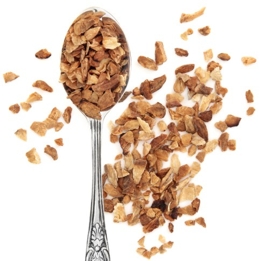 Several fiber ingredients contribute sweetness to dairy foods, while functioning and being declared as fiber.
Several fiber ingredients contribute sweetness to dairy foods, while functioning and being declared as fiber.
“Chicory root fiber ingredients function as low-calorie, natural sweeteners,” said Scott Turowski, technical sales manager, Sensus America Inc., Lawrenceville, N.J. “The sweetness of these products can be as high as 65% that of sugar. In addition, chicory root fiber can help mask the off tastes associated with high-intensity sweeteners and is particularly effective when combined with stevia in dairy applications.
“Along with being natural and ‘clean label’, our chicory root fiber ingredients are now non-GMO Project verified.”
High-protein ice cream requires multiple sweeteners
High-protein ice cream is all the rage, with some retailers now stocking more than a dozen brands. Many marketers are flagging the calories and protein content per entire pint package. Some of these figures are quite astounding.
To keep calories low and protein high, it is paramount that sugar solids be reduced significantly. Some sugar often remains, as it assists with delivering desirable rounded sweetness and mouthfeel. But for the most part, sugar alcohols, namely erythritol, in combination with stevia and fiber ingredients is being used.
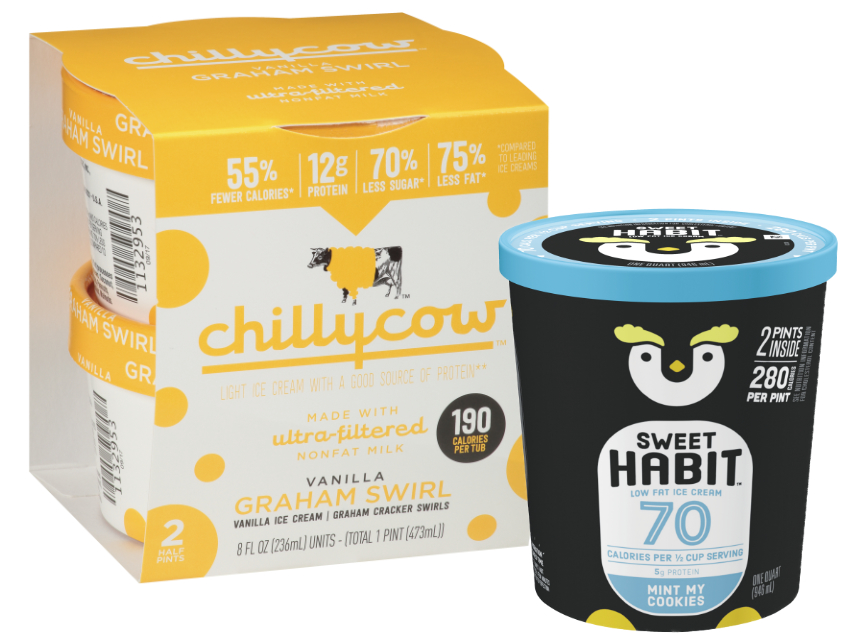 “Erythritol is a natural, zero-calorie bulk sweetener that looks and tastes like sugar, making it ideal for dairy applications promoting sugar reduction,” said Ravi Nana, polyols technical service manager, Cargill, Minneapolis. “It has the highest digestive tolerance compared to other polyols and masks the aftertaste of high-intensity sweeteners. In dairy applications, erythritol is often paired with stevia, where it can improve the quality of sweetness, deliver a more robust, sugar-like flavor and fulfill some of sugar’s other functional properties.”
“Erythritol is a natural, zero-calorie bulk sweetener that looks and tastes like sugar, making it ideal for dairy applications promoting sugar reduction,” said Ravi Nana, polyols technical service manager, Cargill, Minneapolis. “It has the highest digestive tolerance compared to other polyols and masks the aftertaste of high-intensity sweeteners. In dairy applications, erythritol is often paired with stevia, where it can improve the quality of sweetness, deliver a more robust, sugar-like flavor and fulfill some of sugar’s other functional properties.”
In ice cream, sugar is what lowers the freezing point and prevents the formation of large ice crystals. This allows for a smooth, silky texture.
“Because of its small molecular size (one-third that of sugar), erythritol can fill that void, providing a threefold freezing-point depression factor,” Mr. Nana said. “That higher effect on freezing-point depression helps soften reduced-sugar ice creams, creating the scoopable texture consumers crave.”




